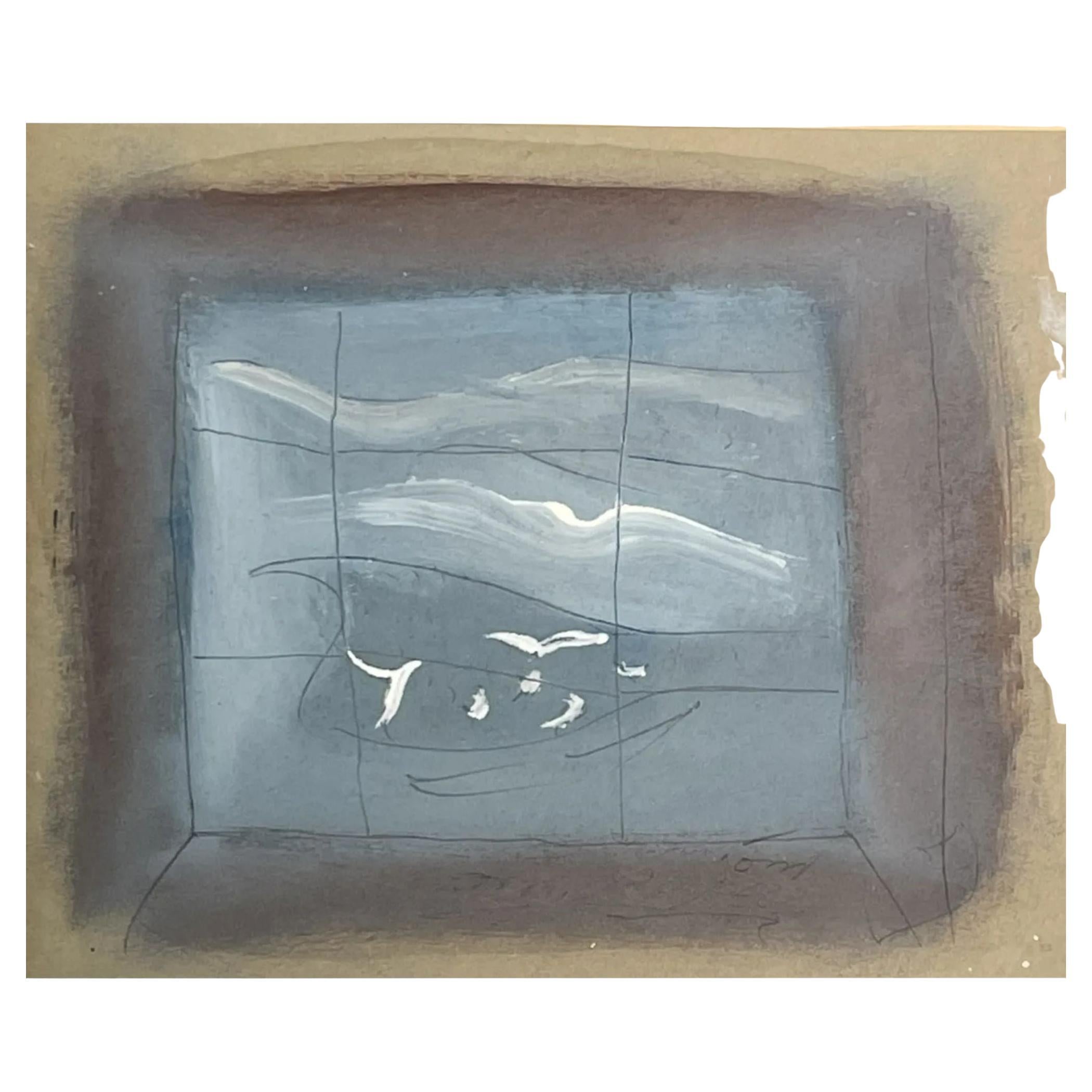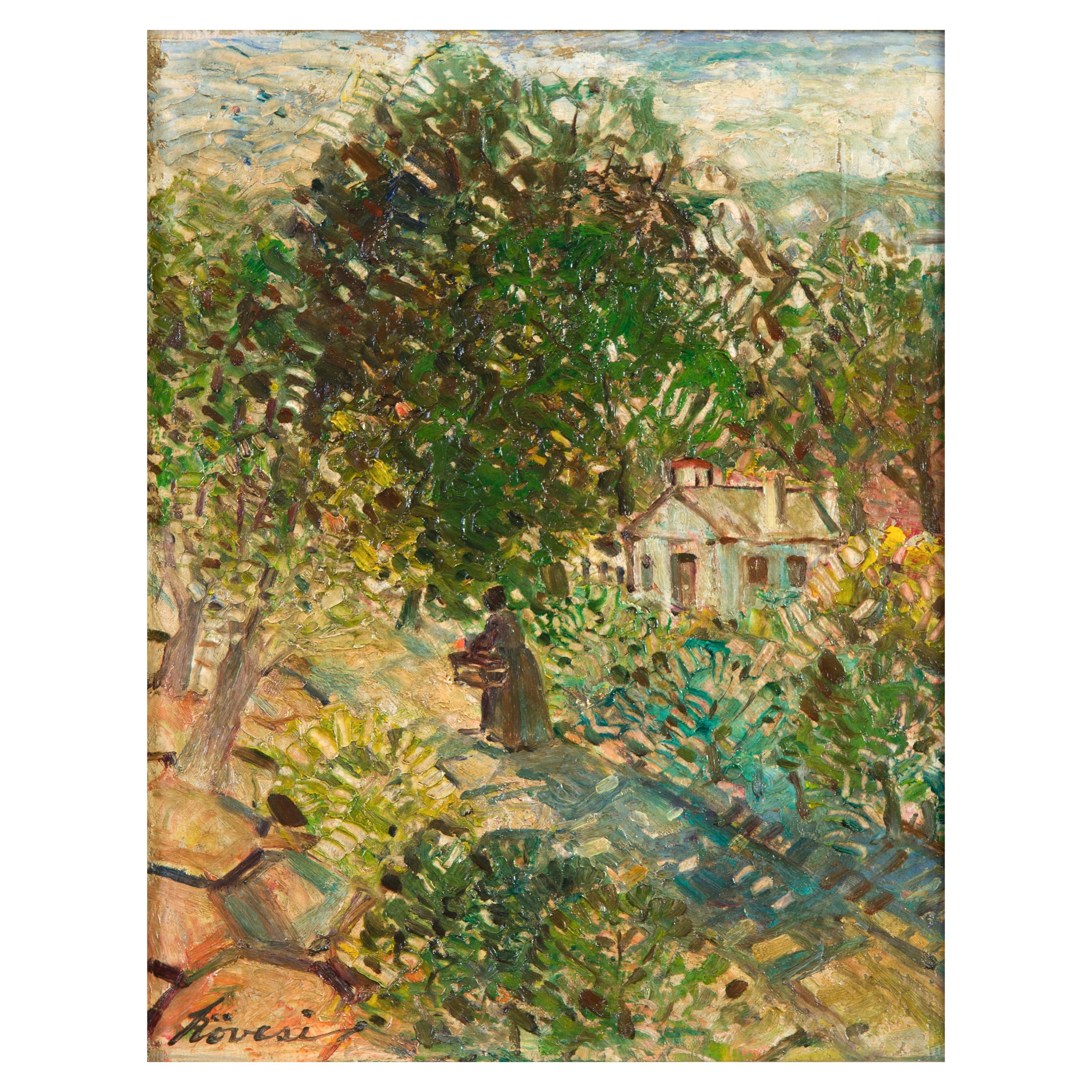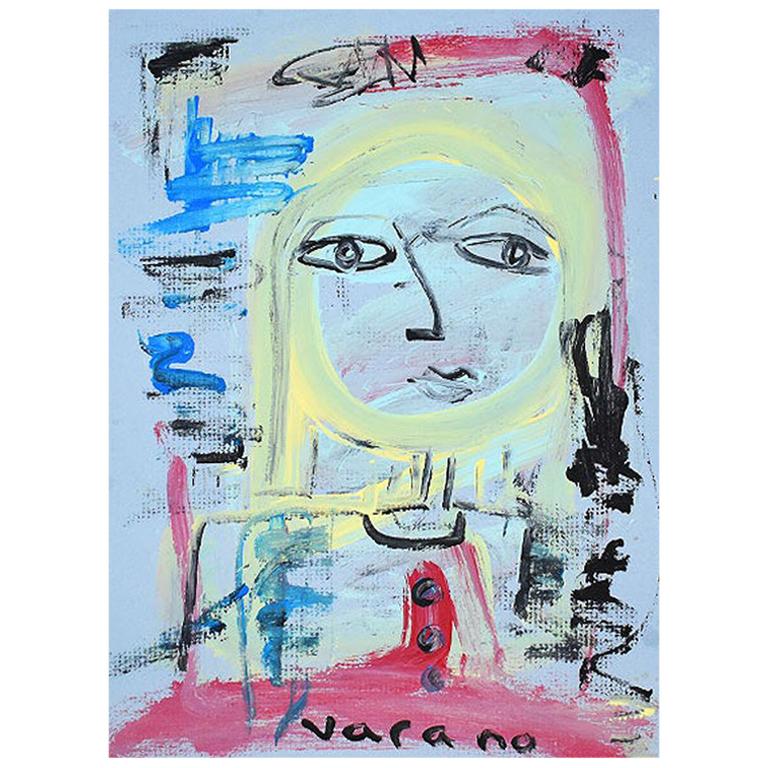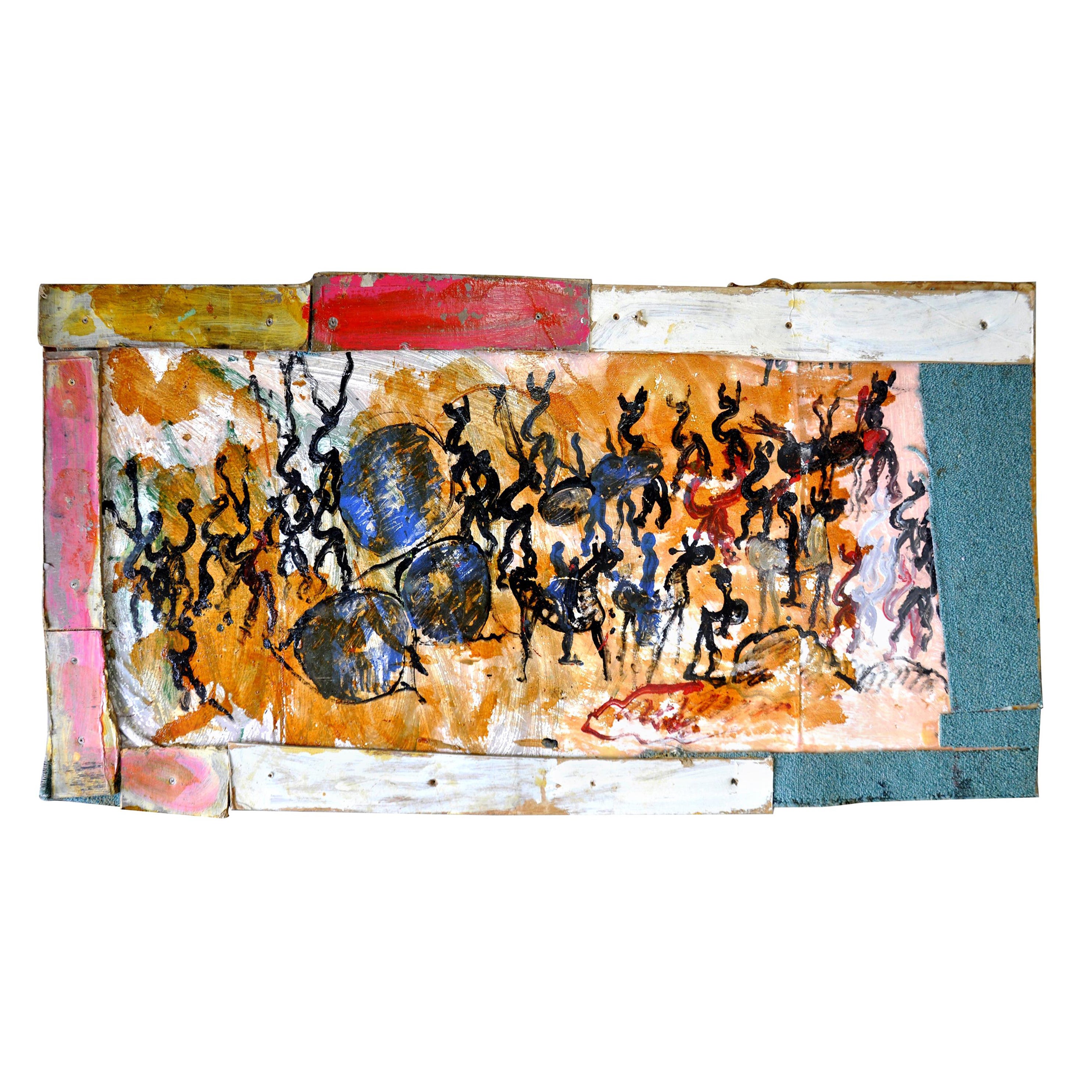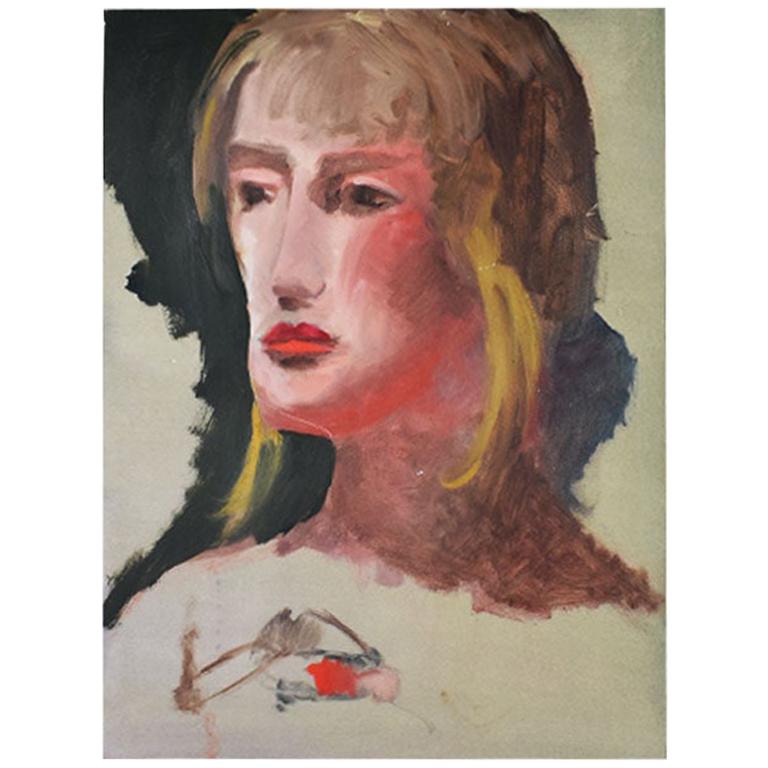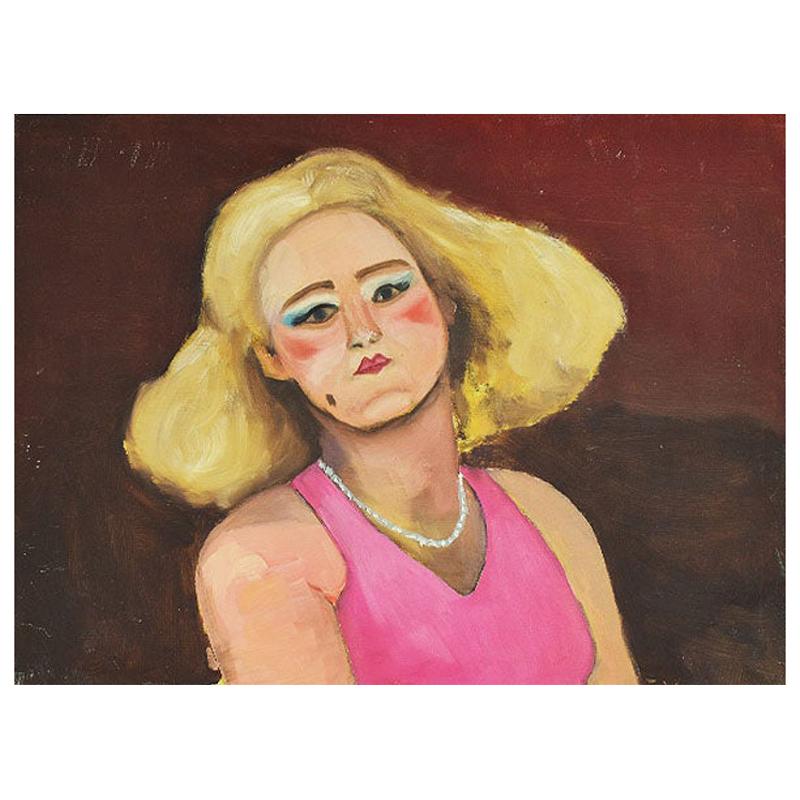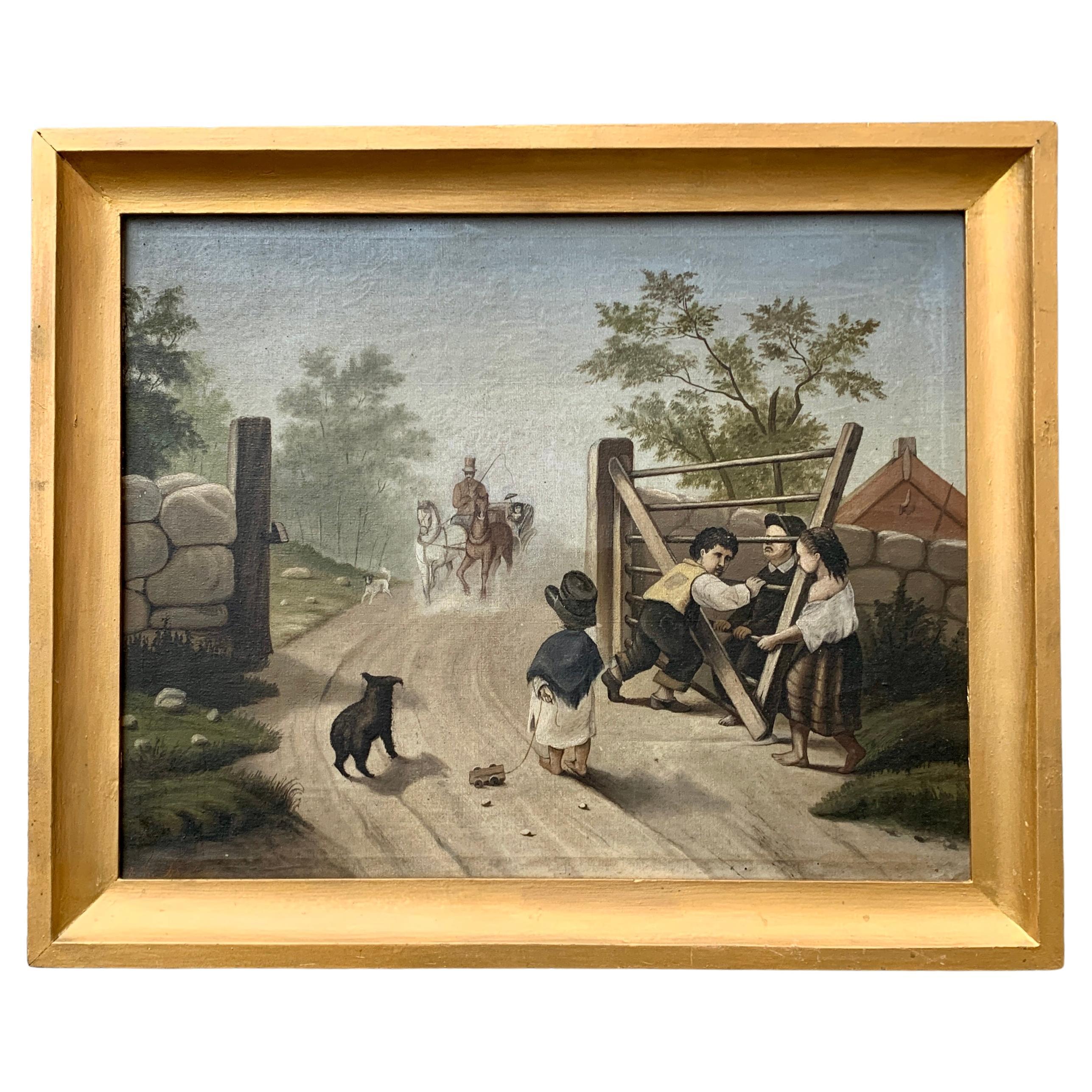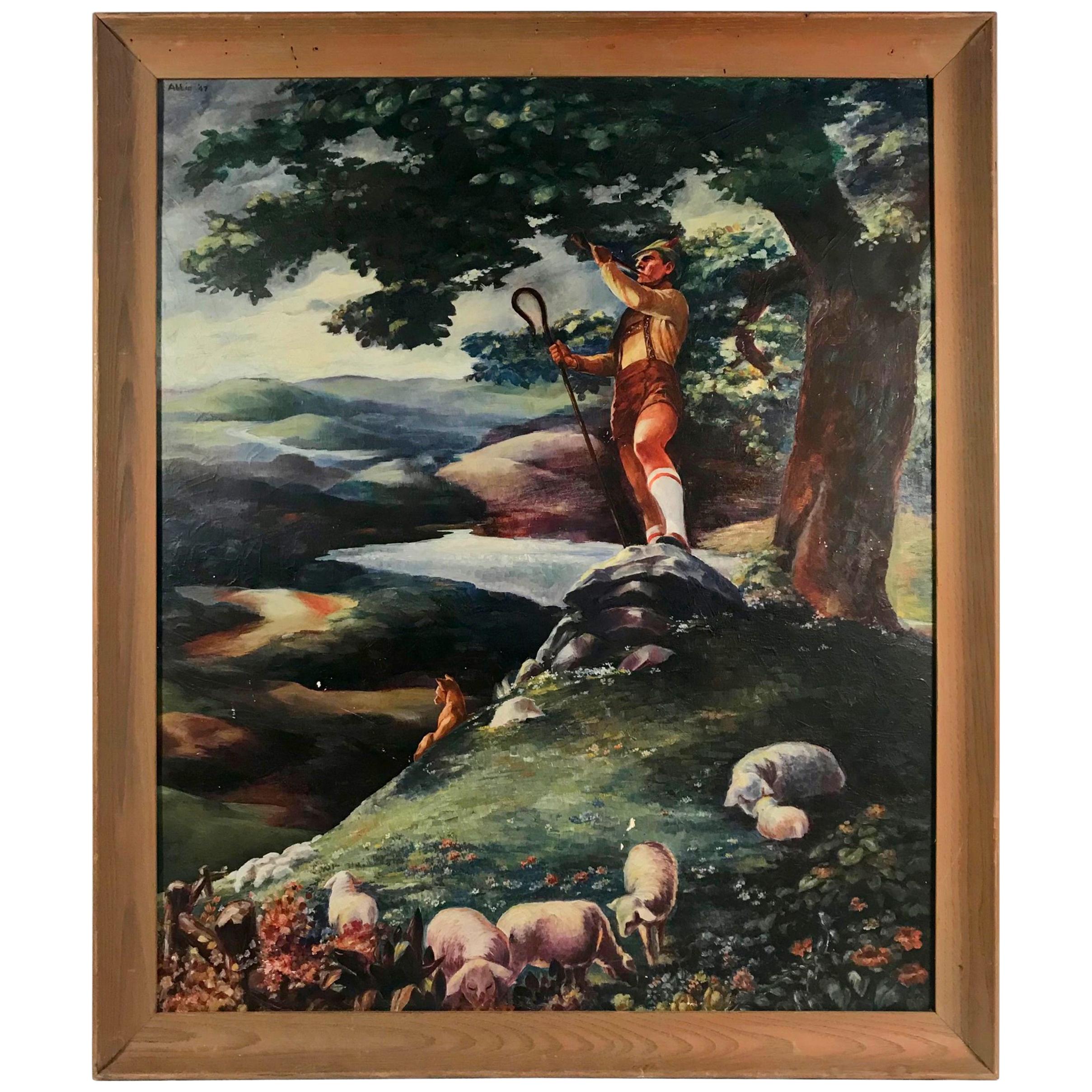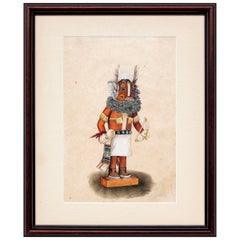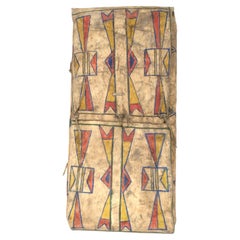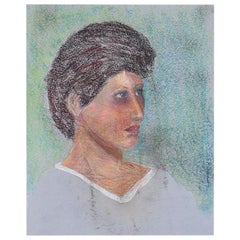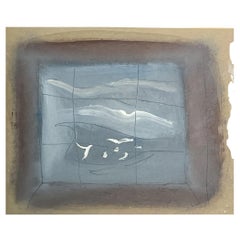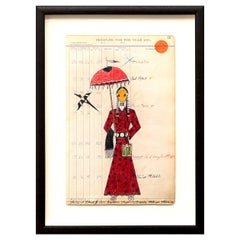
Untitled 'Cheyenne Woman with Parfleche and Umbrella', Ledger Art Drawing
View Similar Items
Video Loading
Want more images or videos?
Request additional images or videos from the seller
1 of 14
Untitled 'Cheyenne Woman with Parfleche and Umbrella', Ledger Art Drawing
About the Item
- Creator:James Black (Artist)
- Dimensions:Height: 23.25 in (59.06 cm)Width: 16.75 in (42.55 cm)Length: 23.25 in (59.06 cm)
- Style:Native American (In the Style Of)
- Materials and Techniques:
- Place of Origin:
- Period:
- Date of Manufacture:2021
- Production Type:New & Custom(One of a Kind)
- Estimated Production Time:Available Now
- Condition:Wear consistent with age and use.
- Seller Location:Denver, CO
- Reference Number:Seller: 261111stDibs: LU1004627921162
About the Seller
5.0
Recognized Seller
These prestigious sellers are industry leaders and represent the highest echelon for item quality and design.
Established in 1979
1stDibs seller since 2013
143 sales on 1stDibs
Typical response time: 5 hours
More From This SellerView All
- Original Large Painting, Native American Ledger Drawing Style by Randy Lee WhiteLocated in Denver, COOriginal painting by Randy Lee White Native American Indian ledger style in acrylic on canvas with assemblage including feather and wood. Wrapped canva...Category
20th Century American Native American Paintings
MaterialsAcrylic
$2,175 Sale Price51% Off - Untitled 'Kachina Doll', Hand Colored LithographLocated in Denver, COVintage Hand colored lithograph by artist Swankar Hanumann of a kachina (Katsina) Doll standing on a pedestal holding a rattle and bow. Presen...Category
20th Century American Native American Paintings
MaterialsPaper
- 1870s Transitional Plateau Rawhide Parfleche Envelope with Geometric PatternsBy Plateau IndiansLocated in Denver, COA parfleche container in an envelope form, finely painted in an abstract design. Makes a stunning wall hanging alone or in a grouping with other parfleche or can be placed on a shelf or Stand. This was created by a North American Indian living in the Plateau cultural area - encompassing portions of what is now northern Idaho, western Montana, northeast and central Oregon, eastern Washington and southeast British Columbia. The tribes from this region include Kalispel, Flathead, Kutenai, Palus, Coeur D'Alene and Nez Perce. Parfleches are rawhide containers which were fundamental to the Plains way of life. Functioning essentially as protective travelling suitcases, they enabled the nomadic tribes to effectively pursue buffalo herds and migrate between seasonal camps. So critical were they to a nomadic existence that over 40 tribes are known to have historically produced parfleches. Collectively, these tribes inhabited an area which encompassed the entirety of the Plains, as well as the parts of the Southwest, the Transmontane and Western Plateau regions. Parfleches were, out of necessity, robust and versatile objects. They were designed to carry and protect within them anything from medicinal bundles to seasonal clothing or food. In fact, it was because of the containers’ robusticity and variety that parfleches earned their name in the Anglo world. Derived from parer (to parry or turn aside) and fleche (arrow), the word parfleche was coined by 17th century French Canadian voyageurs and used to describe indigenous objects made from rawhide. Despite their common utilitarian function, parfleches served as one of the major mediums through which Plains Indian tribes could develop their long-standing tradition of painting. In fact, it is in large part due to the parfleche that tribal style emerged. Even though parfleche painting developed simultaneously with beading and weaving, painting as an artistic tradition held particular importance in tribal culture. Believed to have evolved from tattooing, it had always been used as a conduit through which tribal and individual identity could be expressed. As such, many tribeswomen were deeply committed, some even religiously, to decorating their parfleche either with incised or painted motifs that were significant to them and/or the tribe. For some tribes, such as the Cheyenne, the decorative processes which surrounded parfleche production were sacred. For others, it seems that their parfleche designs shared an interesting artistic dialogue with their beadwork, indicating a more casual exchange of design motifs. This particular relationship can be seen in Crow parfleche...Category
Antique Late 19th Century North American Native American Native American...
MaterialsHide
- Native American Parfleche Box, Sioux, 19th Century Painted Hide PlainsBy Sioux Indian ArtLocated in Denver, COAntique Sioux (Native American/Plains Indian) Parfleche in a box form constructed of rawhide and intricately painted in an abstract design with hourglass and geometric motifs with natural pigments and red trade cloth. At the time this was created, the Sioux Indians were nomadic and are associated with vast areas of the Great Plains of the United States including present-day North and South Dakota, Minnesota, Nebraska and Montana. Authenticity is guaranteed. Box is in very good condition - please contact us for a detailed condition report. Parfleches are rawhide containers which were fundamental to the Plains way of life. Functioning essentially as protective travelling suitcases, they enabled the nomadic tribes to effectively pursue buffalo herds and migrate between seasonal camps. So critical were they to a nomadic existence that over 40 tribes are known to have historically produced parfleches. Collectively, these tribes inhabited an area which encompassed the entirety of the Plains, as well as the parts of the Southwest, the Transmontane and Western Plateau regions. Parfleches were, out of necessity, robust and versatile objects. They were designed to carry and protect within them anything from medicinal bundles to seasonal clothing or food. In fact, it was because of the containers’ robusticity and variety that parfleches earned their name in the Anglo world. Derived from parer (to parry or turn aside) and fleche (arrow), the word parfleche was coined by 17th century French Canadian voyageurs and used to describe indigenous objects made from rawhide. Despite their common utilitarian function, parfleches served as one of the major mediums through which Plains Indian tribes could develop their long-standing tradition of painting. In fact, it is in large part due to the parfleche that tribal style emerged. Even though parfleche painting developed simultaneously with beading and weaving, painting as an artistic tradition held particular importance in tribal culture. Believed to have evolved from tattooing, it had always been used as a conduit through which tribal and individual identity could be expressed. As such, many tribeswomen were deeply committed, some even religiously, to decorating their parfleche either with incised or painted motifs that were significant to them and/or the tribe. For some tribes, such as the Cheyenne, the decorative processes which surrounded parfleche production were sacred. For others, it seems that their parfleche designs shared an interesting artistic dialogue with their beadwork, indicating a more casual exchange of design motifs. This particular relationship can be seen in Crow parfleche...Category
Antique Late 19th Century American Native American Native American Objects
MaterialsHide
- Pueblo Harvest Dance, vintage Painting by Jose Roybal (San Ildefonso Pueblo)By Jose RoybalLocated in Denver, COAn original watercolor painting by San Ildefonso (Pueblo) Native American artist, Jose Roybal (1922-1978) depicting the Pueblo Harvest Dance. Presented in ...Category
Vintage 1970s American Native American Paintings
MaterialsPaper
$2,600 Sale Price60% Off - 19th Century Navajo Blanket with a Nine Point Diamond and Cross with RedBy NavajoLocated in Denver, CO19th Century Navajo Blanket with a nine point diamond and cross design in red, white, black and purple, similar to a chiefs pattern with a classic banded moki background. Dimensions ...Category
Antique Late 19th Century American Navajo Indian Rugs
MaterialsWool
You May Also Like
- Portrait Painting of a Woman with Brown HairLocated in Oklahoma City, OKA lovely portrait sketch by Oklahoma artist Clair Seglem. This piece depicts a woman with short dark hair and a light blue v neck shirt. This piece is on ...Category
20th Century American Folk Art Paintings
MaterialsPaper
- Set of Five Framed "Tanglewood" DrawingsLocated in Sheffield, MAThe five pen-and-ink drawings by Lauzon represent various aspects of a summer concert of the Boston Symphony Orchestra at Tanglewood, Lenox, MA: the co...Category
Early 2000s American Paintings
MaterialsPaper
$750 / set - Untitled, Mix Media, 1968Located in London, GBUntitled, mix media, 1968 Additional information: Style: mixed media Label to verso Dimensions: 23 x 28 cm This work has been part of a private collec...Category
20th Century English Paintings
MaterialsPaper
- David Kovesi Woman in Garden Abstract PaintingBy David KnoxLocated in New York, NYStunning small vintage painting by NY artist David Kovesi of a woman walking thru her garden. This painting, oil on board has fabulous vibrant...Category
Vintage 1950s American Paintings
MaterialsWood, Paint
$440 Sale Price32% Off - Postmodern Abstract Cubist Portrait Painting of a Woman on BlueLocated in Oklahoma City, OKA striking outsider painting depicting a woman with blonde hair. The artist used a wonderful bright pallet of bright pink, blue, yellow and black. This piece is painted on hard paper...Category
20th Century American Post-Modern Paintings
MaterialsPaint, Paper
- Untitled, Purvis Young Mixed-Media Painting, 1980sBy Purvis YoungLocated in Miami, FLAbstract mixed-media work by artist Purvis Young. Folk Art portraying bleeding and pregnant figures in a crowd, policemen on horseback and large blue eyes. Young used eyes as symbols...Category
Vintage 1980s American Folk Art Paintings
MaterialsPaint, Reclaimed Wood, Canvas, Paper
Recently Viewed
View AllMore Ways To Browse
Native American Parfleche
Ledger Drawings
Native American Ledger
Native American Ledger Drawing
Native American Ledger Art
Native Ledger Art
Native American Ledger Painting
De La Hart
Folk Art Vintage Victorian
Cover Ups
Lacloche Paris
Alexandre V
Parisian Folk Art
Antique Mexican Retablo
Antique Mexican Retablos
Bonniers Japan
1985 Bordeaux Vintage
Roger V

